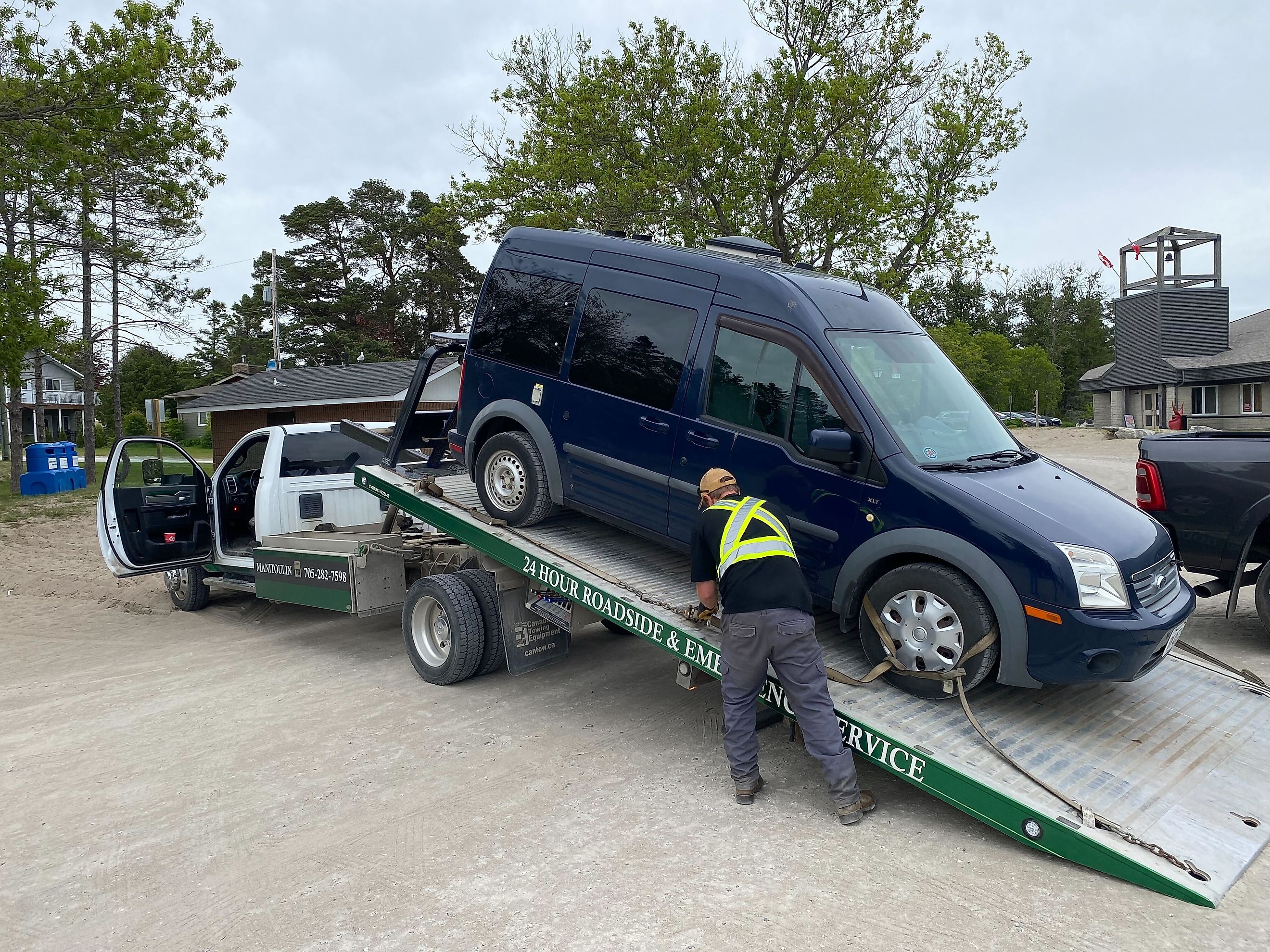
The Unexpected Tribulations of North American Van Life
The tunes are blaring, I've got one hand on the wheel, one hanging out the side window, my girlfriend has her feet kicked up on the dash, and enchanting nature scapes steadily whizz by - life's pretty good on the open road. Well, most of the time. There is, of course, an agent of chaos constantly lurking in the peripheral, waiting to rear its ugly head in the form of a Check Engine light, flat tire, or dead battery. Add in the awkward parking lot picnics, the slightly unnerving "stealth camps," the bouts of uncooperative weather, the shuttered small towns, and the crowded attractions, and you've got yourself a more complicated picture than initially comes to mind when pondering "van life." As a travel writer, I primarily focus on the fun times and cool places (of which there are many), but today, I'll touch on the unexpected tribulations (of which there is also no shortage). Hopefully, you prospective vehicular vagabonds will have a better idea of what this weird travel trend actually entails.
Destitute by Choice: What is Van Life?
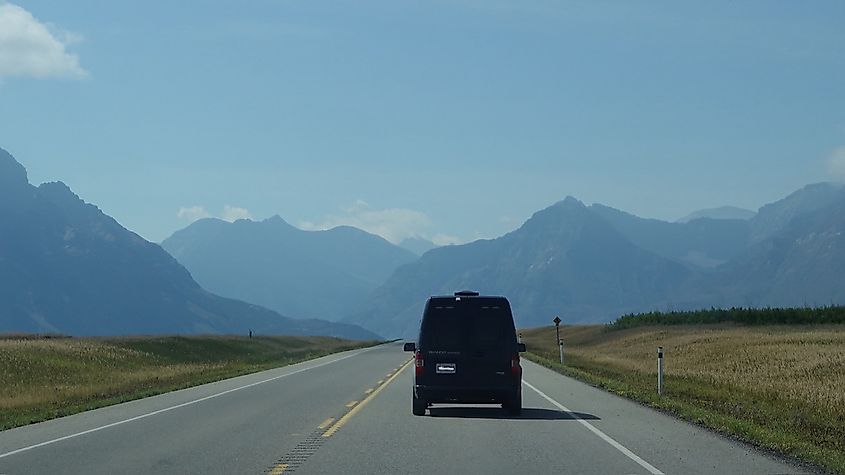
North America promotes van life with both a carrot and a stick. On the one hand, it's a big and beautiful continent, but because it lacks a comprehensive rail network, thoroughly exploring it requires a vehicle. At the same time, buying a house is unattainable for many of its citizens, and let's be honest: rent is prohibitively expensive. Consequently, there is an ever-growing demographic of car-dwellers - some elective, others out of necessity. You will see them touring national parks but also showering at your local gym and sleeping in Walmart parking lots (the ones that still allow it).
This article will focus on those who bought or converted a camper van primarily for the purposes of adventure - the category in which Irina and I have found ourselves for the past six months. Previously, we did a one-month trial stint through the interior towns of British Columbia, but buying a kitted-out Ford Transit Connect (i.e., the type of vehicle that typically delivers flowers or mail) was our first big foray into the van life scene. Luckily, we're both freelancers, so we simply cruise along as we please and then stop to work at some cute cafe or quirky brewery before continuing the daily sightseeing and errands. Our version of van life, therefore, isn't quite a vacation, but it's a far cry from the corporate grind that we have both gotten a taste of in the past.
A Quick Recap of the Pros
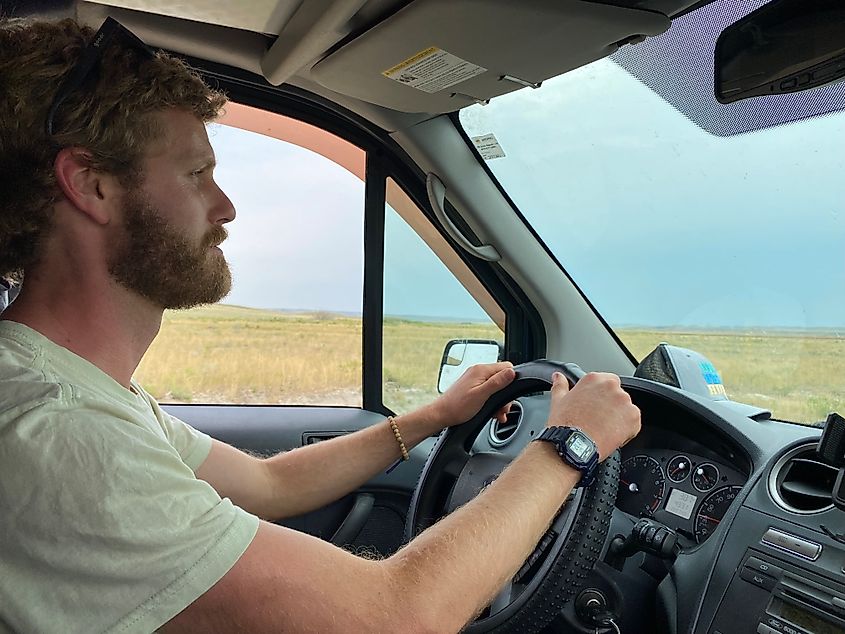
Before I poke holes in anyone's dream, let me first recap what I love about living in a van. Simply put, it's freeing. If you dig a place, you linger. If you roll into somewhere sketchy, just burn rubber. Constantly moving around is ferociously addicting because there are an infinite number of novel spaces, friendly faces, and potential home bases. Van life takes what you love about those weekend camping trips or week-long snowbird road trips and makes it the norm for as long as you want. As long as there's gas in the tank, you're the master of your domain.
Living in a van also forces you to engage with the world. In order to save your sanity (and your posture), you have to get out and explore local trails, shops, stores, events, and more.
The UnCONvincing Side
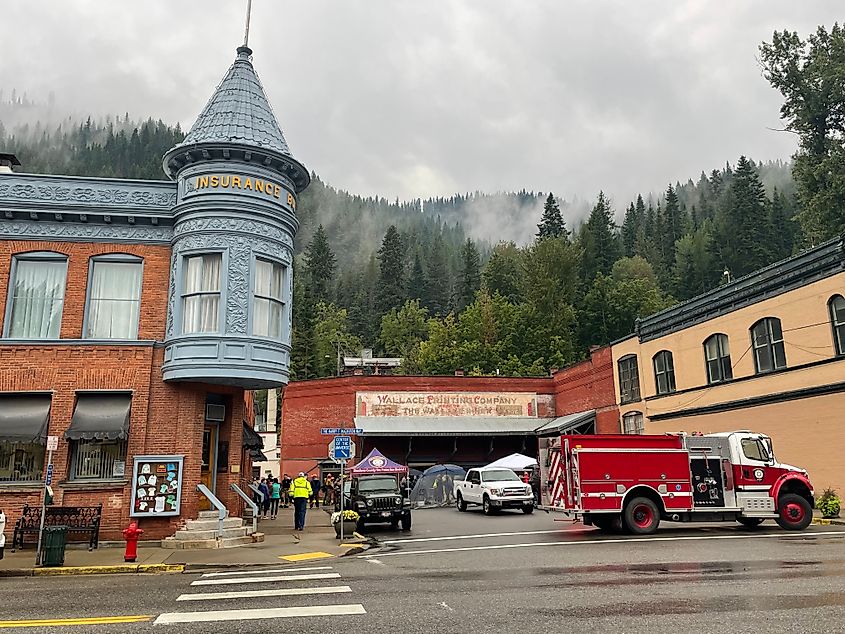
Alright, now that you know I'm no hater, let's be frank about the undesirables.
Buying a vehicle is hard at the best of times, but buying a home on wheels kind of sucks. We started our search while in Split, Croatia - constantly pouring overused listings in advance of our flight home to Canada. Everything was either way too expensive, a rusted box on wheels, or geographically inconvenient. Yes, there is always the option to buy a sprinter van and convert it yourself, but we wanted to hit the ground running. I know people who have done the year-long, ten-to-twenty-thousand-dollar project themselves and found the experience rewarding and fruitful, but we just wanted to take the next step (i.e., something more legitimate than my Toyota Sienna with an air mattress in the back, but less than a YouTube influencer's pimped-out ride). After about two months of hunting, we settled on the cute but cramped Transit that was being sold for 15K (CAD) in a rural town about 45 minutes from my hometown of Sarnia, Ontario.
Even though the van passed my sniff test (i.e. multiple drives and a good chat with the seemingly earnest couple), it failed the corresponding safety check. Therefore, in order to get it legally registered, I had to fork over another 1,500 big ones in repairs. I wish I could tell you that it was smooth sailing from there, but that work order only covered the necessities, not forthcoming eventualities.
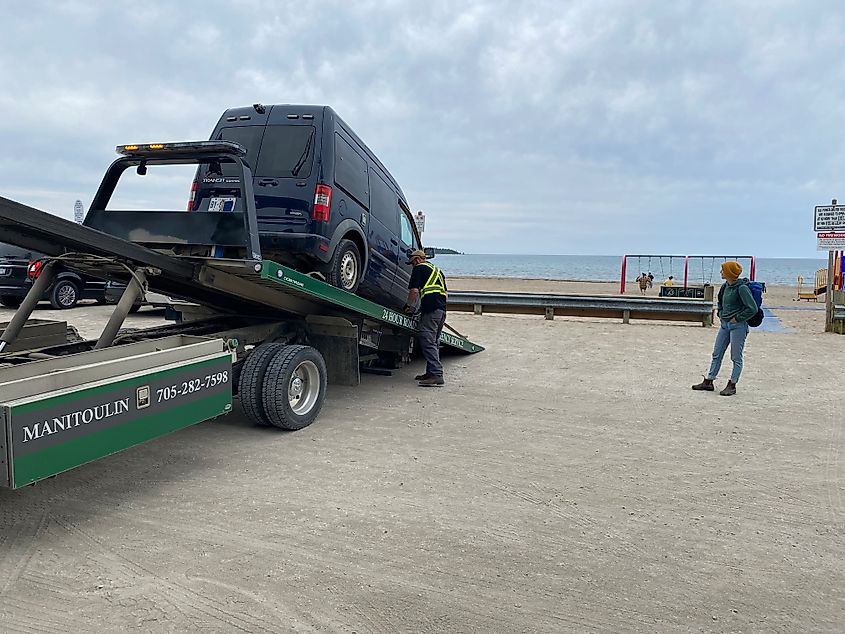
One week into our westbound southern Ontario adventure (where we saw such stellar highlights as Bruce Peninsula National Park, the sunken treasures of Fathom Five National Marine Park, and the quaint village of Tobermory that divides them), we had our first breakdown. Previously, I had noticed that the engine would randomly struggle to ignite, but after jiggling the key a few times, I always got the result I wanted. That was until we finished a pleasant beach day on Manitoulin Island. No amount of hopeful attempts or even a boost from the Good Samaritan parked next to us, could get the van running. Thus, we logged our first CAA call (the same deal as AAA in the States).
Even though we were on a remote part of the island (the world's largest freshwater island, mind you) during the pre-season, a local tow truck was able to spring into action in just a couple of hours. Unfortunately, it was Saturday afternoon and their garage didn't open until Monday. Faced with no other option, we simply camped out in the parking lot (shoutout to Meneray Towing!), walked around the tiny town of Mindemoya, and even hung out with the shop owners by the lake. Three days and one replaced starter later and we were back on the road. Yes, the hiccup was frustrating, as we were chomping at the bit to cover the continent, but it was also nice to slow down for a few days and soak in a place we otherwise never would've seen, and in all likelihood, will never see again.
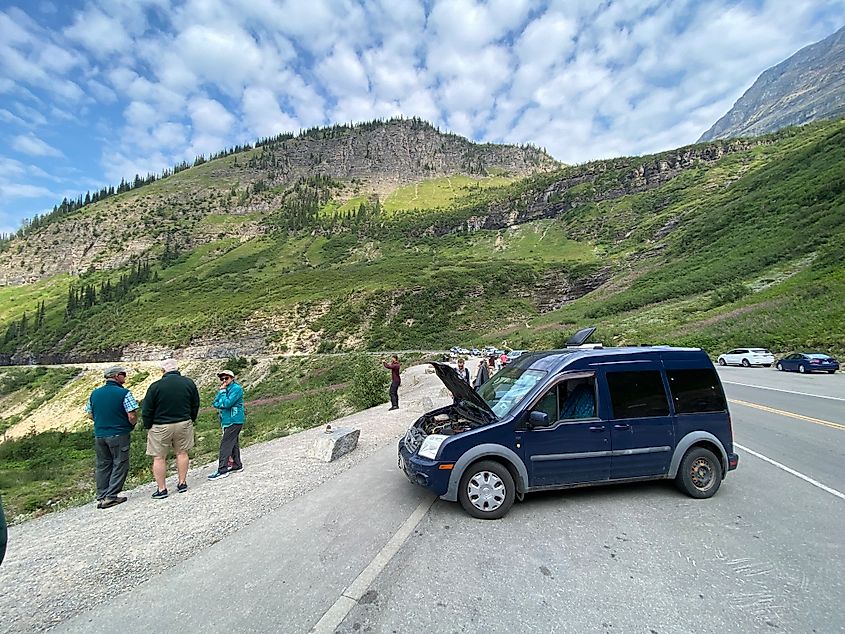
Our four-cylinder, front-wheel-drive van doesn't excel on hills. In fact, with the weight of all of our gear (literally everything we own) and the conversion set up, it flat out dreads significant incline. At best, I have to flick the four-ways on and slowly chug along in the far right lane, but as for the worst? Well, I found that out a half-mile before the highpoint of Montana's world-famous Going-to-the-Sun Road.
This 50-mile scenic byway through Glacier National Park slowly but surely switches back a maximum altitude of 6,646-feet, passing many roadside attractions in the process. The Rocky Mountain views were so captivating that I didn’t notice the engine thermometer creeping higher. Just a few turns from Logan Pass Visitor Center (where I planned to hike to Hidden Lake), the stuttering van jolted me out of my reverie. I was immediately confronted by a maxed-out heat sensor and the wrench icon that informs sorry drivers that addressing the situation is non-optional. With no space to pull over (this mountain road is quite tight at times), I had no choice but to double-down - literally rocking back and forth in my seat to try and generate forward momentum. Somehow, I made it to the parking lot, and even more miraculous, I found a free spot. Upon popping the now steaming hood, coolant sprayed skyward like Old Faithful (oh wait, that's Montana's other national park).
Now, I'm no grease monkey, so when I saw fluids exploding out of my engine, I thought I was done for. And given that there is no cell service up there, getting another tow, or better yet, communicating the situation to Irina, who I left in Apgar Village to catch up on some of her work (life of a freelancer) looked grim. Thankfully, multiple dads sprung into action, offering me cold bottles of water to pour into the tank, and reassuring me that this would ameliorate the immediate issue. Sure enough, after some ice cold agua and a long timeout, I was able to coast back down to our campground.
Irina was worried about the van but even more bummed that she wouldn't get to see the same amazing sites the following morning (the initial plan was to double back and then continue on to Alberta). After all, trying that stunt again, this time with more water than coolant in the system would be absurd, right? Well… It's truly astonishing what a good night's rest will do for the psyche. In the early hours the following morning (note: reservations are required after 6am until 3pm each day) we decided that we should at least go get breakfast at the Lake McDonald Lodge - a flat drive of only 20 minutes. After that, we would do the smart thing and backtrack to the nearest auto garage for a flush and general assessment.
Well… it is truly astonishing what a hearty meal and a few cups of black coffee will do for the psyche. The van looked, sounded, and smelled ok up to that point. And unlike the previous afternoon, the sun hadn't yet hit the road, and so things were likely to stay much cooler this time around. Thus, we decided to forge ahead, one checkpoint at a time. I'd keep a meticulous eye on the thermometer, and if anything acted up, we'd pull over as soon as possible to let things cool off. Sure enough, that moment of reckoning came at precisely the same point in the road. But this time, there actually was space to pull over (a place called Paradise Meadow, aka Big Bend Viewpoint). Once again, American Samaritans came to check on us, offering water and extra coolant while we waited for things to simmer down. It took awhile, but we did make it to the pass, onwards to the St. Mary terminus, and then to a small garage in Fort Macleod for the aforementioned coolant flush (and an oil change for good measure). Shout out to Larson's Tire Shop!
Camping
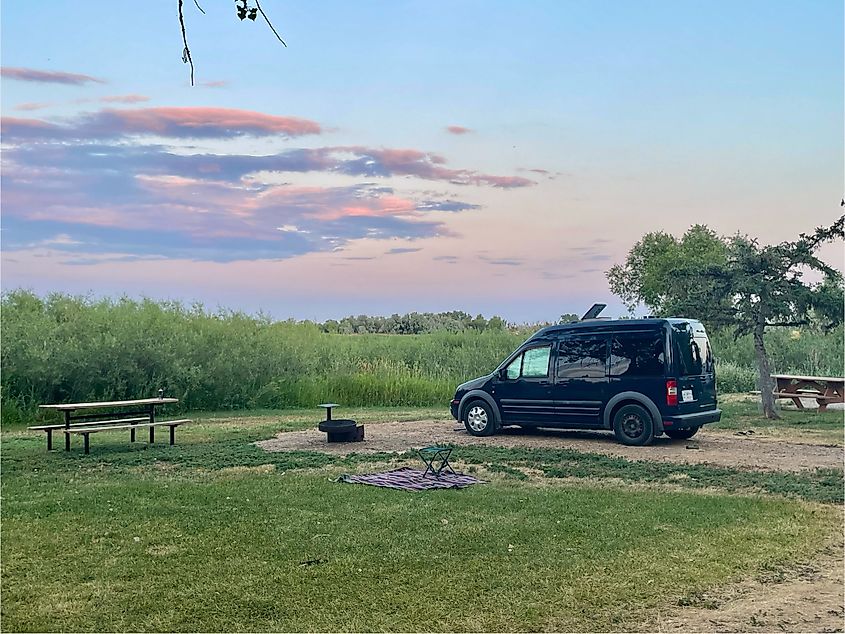
North American van lifers tend to rely on a variety of overnight arrangements. Forward thinkers with a generous budget may aim exclusively for legitimate sites such as national/state parks and municipal campgrounds. But for those of us who prefer to let the whimsy of the road dictate the plan, or for anyone unimpressed by the $20-50+ nightly rates (plus the dreaded $8-$14 "online reservation fee"), public land detours (i.e. Bureau of Land Management in America, Crown Land in Canada) and urban "stealth camping" are likely to dominate evening strategies.
Let's talk about stealth camping. This semi-legal, gray-area tactic involves simply parking in a lot without any "No Overnight Parking" signs, on a city street after the listed pay hours have elapsed (usually 6pm), or in some random residential area. As the term suggests, the goal is to maintain a low profile. Most of the time, no one notices or cares that you're there, and you get to roll on your merry way the next morning. But given that each place has different bylaws and attitudes, every van lifer inevitably stockpiles a few stories of when they got "Brighted" or received "The Knock."
"Brighting" is when authorities check you out but don’t ask you to leave. The idea is that by shining high beams or doing a few laps with a flashlight, they’ll encourage the occupants to move along on their own. Getting the knock is decidedly less ambiguous. The vast majority of the time this slightly startling experience is benign, but you will have to face whatever police officer or security guard stands on the other side of the door, and you will most likely have to drive on, no matter the hour. If you're polite about it, then you might get a free pass to ride it out until first light, or you might get a helpful suggestion about someplace nearby where you can rest in peace.
Our first knock came at the hand of a Banff National Park ranger. On this particular night, the campgrounds were all full and we knew that stealth camping in the Town of Banff was a no-go (the Aussie staff at Three Bears Brewery told us so). Alternatively, we thought it'd be ok to drive to a quiet turnout on a less-traveled road. We were wrong. We hit the hay at 9:30pm and were roused at 11pm. No ticket was given, but it was made clear that if we didn't move along, the park warden would be our next visitor.
Our next knock happened in the Planet Fitness parking lot in Bozeman, Montana. This low-cost gym membership is popular amongst wheeled itinerants because locations are plentiful and they're usually ok with overnight camping. Unfortunately, even though the staff gave us the thumbs up, the third-party security guard wasn't having it. Like a hawk, he swooped down upon us less than 20 minutes after crawling into the back bed area. He was nice about it though, and informed us of an alternative lot that still allowed overnight parking.
Even if things go well in terms of the local authorities, any given parking spot is bound to rear unpleasant, previously-unnoticed disturbances. Sometimes a blaring train rolls by just as you're drifting off. Sometimes a city maintenance crew starts chiseling or clattering away at 5am. Sometimes a group of drunk people decide to haw-hurrah on the corner for an hour. And sometimes a community fundraising event overtakes that one-square-block you coincidentally hunkered down on. Seriously, when we were in Wallace, Idaho, I went off to grab a coffee while Irina slept a bit longer. By the time I got back, a fire truck had blocked off the street and pop-up tents surrounded our van. I awkwardly asked to move before they went any further, and then we actually signed up to participate (it was a 9/11 stair climb to commemorate first responders) - another happy accident! Ultimately, the ever-present possibility of being disturbed in the night can, understandably, give some people pause about stealth camping. If you want to get ahead of the curve, check out the app iOverlander to see where people have had sweet dreams, and where they've had issues.
Errands
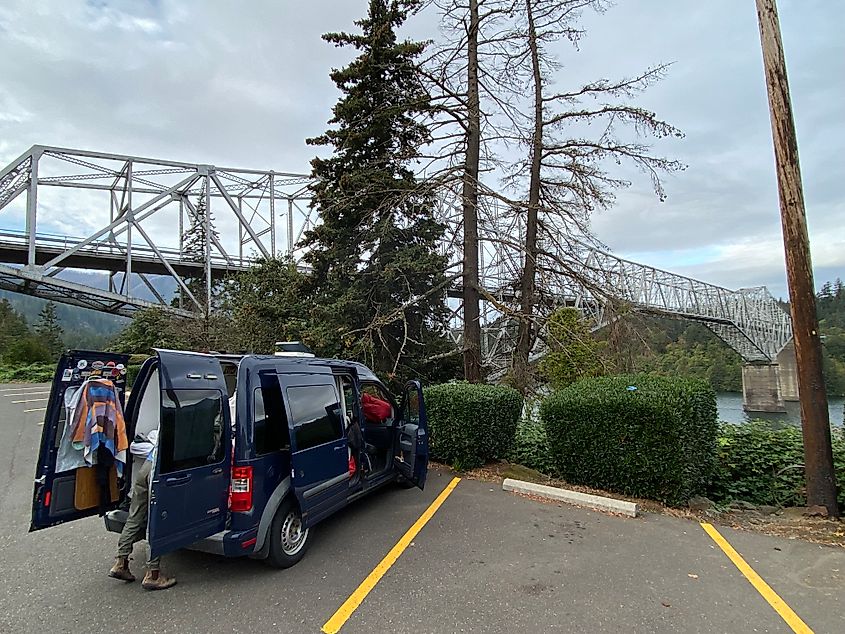
The last topic worth mentioning is errands. Like a hydra, for every chore you check off, two more sprout up. Since we have a run-of-the-mill cooler, groceries have to be fetched every 48 hours. Likewise, our freshwater tank has to be filled regularly (and laboriously, I might add), and finding an appropriate place to empty a gray tank is more challenging than I initially imagined. Every day, the bed has to be taken down and made up again each night. Then there's the ongoing van maintenance—not just the big stuff. We have to replace velcro strips for window covers, tighten screws for latched shelving units, and duct tape obstinate wiper blades - all things that are easy to procrastinate on. Furthermore, clean clothes require a trip to a laundromat, and since our van is way too small for a comprehensive plumbing system, even showering is a daily task that has to be addressed. On days without a Planet Fitness or formal campground to turn to, we might simply indulge in a post-run lake swim, or failing that, rock a towelette wipe down (you get used to it).
Van Life Realities: Balancing Freedom and Frustration
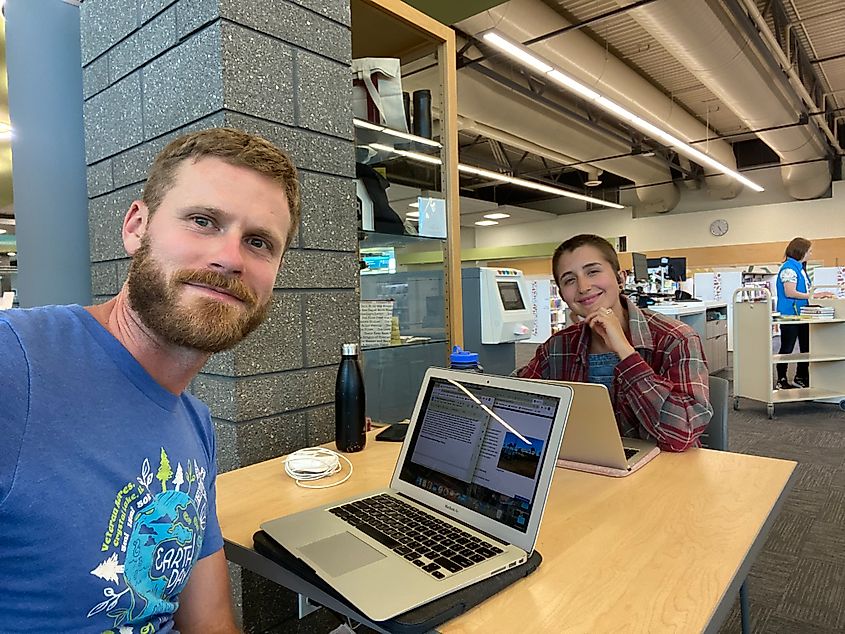
I still think van life is a lot of fun, and I honestly can't believe that I get to drive around to so many cool places. But with that said, like all fantasies, there are inglorious aspects to consider. Keep indulging your dream, but don’t let wanderlust paint unrealistic pictures of van life. Here's the truth: it’s probably 60-70% awesome, 20-30% mundane, and about 10% terrible. That's the truth, and those are the tribulations to watch out for. Godspeed.











